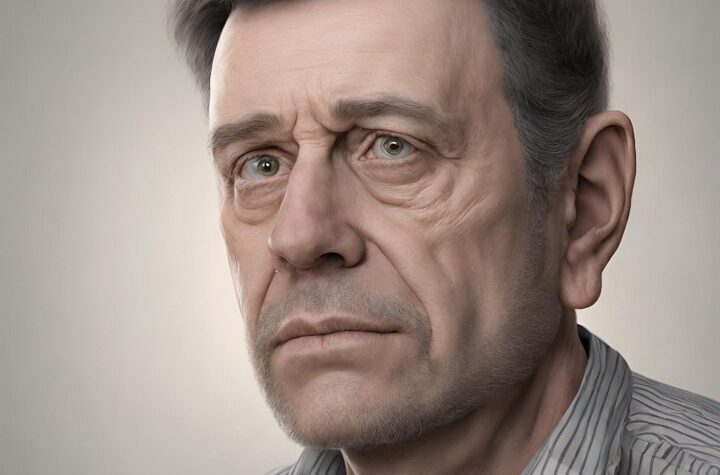Famous people with Marfan Syndrome walk the earth like the rest of us, albeit with a genetic twist. Marfan Syndrome is a connective tissue disorder affecting 1 in 5,000 people worldwide. It has a sneaky way of stretching limbs and touching hearts — quite literally, as it can influence the heart’s structure. A diagnosis can be made through a genetic test or by examining family history to connect the dots.
Though Marfan Syndrome affects each person differently, there are sure signs to watch for in individuals who carry this quirky genetic trait. Extra-long limbs or fingers? Check. Being taller than most friends and family members? Quite likely. But more importantly, those suspecting Marfan Syndrome should watch out for symptoms like scoliosis or heart palpitations. These symptoms hint at something deeper than mere physical appearance quirks.
Let’s examine all the famous people with Marfan Syndrome:
Isaiah Austin
Just before the NBA draft, former Baylor basketball star Isaiah Austin, a potential late first-round pick, received a life-changing diagnosis. After an abnormal EKG test result during a standard physical at the NBA combine, further genetic testing revealed he had Marfan syndrome.
Doctors advised the 7-foot-1-inch Austin to stop playing basketball right away due to the danger of rupturing his enlarged heart arteries. Even with this devastating news, Austin stayed positive, thanking his supporters and feeling grateful for the time he spent playing the game that transformed his life.
Despite his NBA career ending prematurely, friends, family, and the sports community showed their support. Baylor coach Scott Drew suggested focusing on his health, finishing his degree, and becoming a coach in the program. Austin demonstrated resilience in facing this difficult challenge, stressing that it marked the beginning of another life chapter rather than an end.
Javier Botet
Spanish actor Javier Botet is famous for portraying monsters and creatures in numerous horror movies. He has an unusual genetic disorder called Marfan syndrome. Even with the challenges of this disorder, Botet pursued his passion for acting as monsters by studying fine arts and attending movie makeup classes.
His standout physical traits and acting skills make him popular for monster roles. Recently, he played an Egyptian god in The Mummy, a space creature in Alien: Covenant, and the primary monster in Slender Man.
Despite long makeup sessions and uncomfortable prosthetics being tough, Botet remains devoted to his work by using mindfulness techniques to ease himself during hard times on set. Along with his accomplishments, Botet still dreams of being part of a Star Wars film – an aspiration he held since childhood.
Austin Carlile
Austin Carlile, the lead singer of Of Mice & Men, faced significant challenges due to Marfan syndrome, leading to their European tour being called off. This inherited condition affecting connective tissue deeply affected Carlile, who openly discussed his troubles on social media.
He showed the difficulty of living with Marfan syndrome and pointed out that getting better isn’t easy. The syndrome, with a range of symptoms like possible heart issues, has shaped his journey and made everyday tasks a unique experience.
Carlile’s honesty on sites like Twitter gives a glimpse into his fight with Marfan syndrome. Besides medical issues, he discusses the emotional impact and how society views health. Despite these obstacles, he stays strong and appreciates the support from fans while being thankful for his time in music.
Becca Weust
Beth Kephart’s book for young readers, The Great Upending, is a touching tribute to Becca Weust, a girl affected by Marfan syndrome. The story’s main character, Sara, faces challenges similar to Becca’s with the genetic disorder, creating an emotional tale. Becca remembers her childhood on a farm, enjoying tractor-pulled hayrides and nature.
As she deals with Marfan syndrome, her experiences change from childhood complaints about physical limitations to managing pain, tiredness, and how others perceive her. Becca’s journey highlights her strength and shows the human aspect of living with a chronic condition.
In an honest interview, Becca talks about the fortunate event that led to her Marfan syndrome diagnosis at a young age. She thinks about how the syndrome impacted her life, from limiting her childhood activities to dealing with symptoms as she aged. Becca highlights the ups and downs of diagnoses, surgeries, and constantly advocating for herself in the face of chronic illness.
Despite ongoing struggles, Becca finds comfort in life’s simple joys, her supportive circle of friends and family, and an enduring love of learning, primarily through libraries.
Richard and Brian Paul
Meet Richard and Brian Paul, two brothers from Pleasant Plains on Staten Island, who aim to raise awareness about Marfan syndrome during National Marfan Awareness Month. The brothers hope to bring attention to this frequently misunderstood condition with their notably tall stature, long limbs, and unique physical features.
Brian, who is 36 and 6 feet 8 inches tall, emphasizes the need to be proactive in handling Marfan syndrome. This is so they do not face the same difficulties their father did. Both siblings have had surgery to address aortic aneurysms, which are commonly associated with the syndrome. Dr. Thomas Maldonado, a vascular surgeon, highlights the value of preventative actions like routine checkups, beta-blockers, and avoiding contact sports.
Despite obstacles, people with Marfan syndrome can lead everyday lives with proper care. Richard and Brian actively participate in the National Marfan Foundation, sharing their personal experiences to increase awareness and help others learn about this genetic disorder.
Bianca Brouwers
Get to know Bianca Brouwers and her family, among the tallest in Britain. Bianca, who has Marfan syndrome, has three daughters – Leah, Emma, and Lexi – all of whom inherited the genetic condition. Her son Remy does not have the disorder. Despite Marfan syndrome’s challenges, the family stays optimistic.
Bianca, at 6’3″, is the tallest, and her daughters are already tall. Lexi, the youngest, has extra health issues as she has both Marfan syndrome and Cri du Chat, a chromosomal disorder. Even with uncertainties, Lexi is doing well and bringing happiness to her family, who lovingly refer to her as their “big little girl.”




